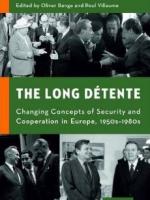The long détente: a new perspective on the cold war
By offering new, Euro-centered narratives that include both East and West European perspectives, the combined contributions of the new book The Long détentepoint to critical inconsistencies and inherent problems in the US dominated narrative of the ‘Victory of the Cold War’. Yet, rather than aiming at replacing this understanding entirely, the argument of a ‘long détente’ demonstrates that this superpower narrative can, and needs to be, augmented with the plentitude of European experiences and perceptions. After all, it was Europe – its peoples, societies, and states – that stood both at the ideological and military frontline of the conflict between East and West, and it was here the struggle between liberalism and communism was eventually decided.
DIIS researcher Gry Thomasen argues in her chapter on the European policies of the Johnson administration (1963-1969) that these need to be interpreted in the much broader context of European and superpower détente. Thus, the US bridge building policies of the 1960s constituted a response to the movement toward détente in Europe. The stirrings in Eastern Europe were an opportunity to push for an evolution in the East, whereas the political developments in Western Europe necessitated a response in order to maintain alliance cohesion and Western Unity.

